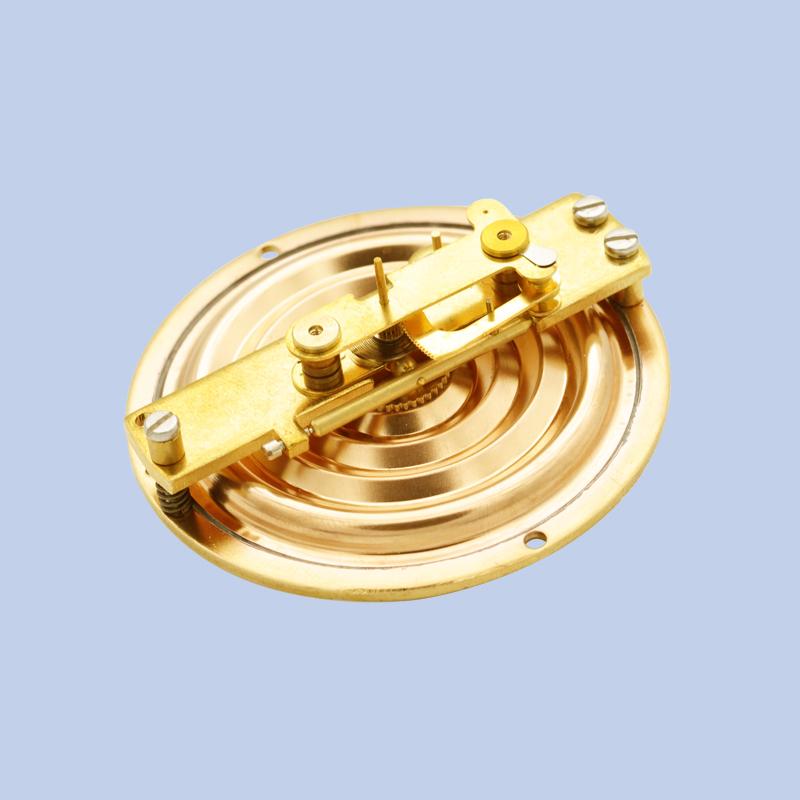
7 月 . 30, 2024 05:48 Back to list
Understanding the Design and Functionality of Wholesale Differential Pressure Gauges in Various Applications
Understanding Wholesale Differential Pressure Gauge Construction
In industrial applications, differential pressure gauges play a crucial role in monitoring the pressure difference between two points in a system. This measurement is vital in various processes, including fluid dynamics, HVAC systems, and filtration monitoring. Understanding the construction and characteristics of wholesale differential pressure gauges is essential for engineers and technicians who rely on these instruments for accurate data.
What is a Differential Pressure Gauge?
A differential pressure gauge measures the pressure difference between two input ports. This allows operators to determine whether a system is operating efficiently or if maintenance is required. These instruments can detect changes in pressure caused by blockages or leaks, making them pivotal for ensuring system reliability and efficiency.
Construction of Differential Pressure Gauges
The construction of differential pressure gauges can vary based on the application and specific requirements. However, most differential pressure gauges share common components that enable their functionality
1. Sensing Elements At the heart of a differential pressure gauge lies the sensing element, which is responsible for detecting the pressure difference. Various sensing technologies could be employed, including mechanical bellows, diaphragms, or capacitive sensors. Each type has its benefits—while bellows are robust and suitable for higher pressures, diaphragms tend to offer more sensitivity and accuracy.
2. Connection Ports Differential pressure gauges typically feature two connection ports. These ports are used to connect the gauge to the process system. One port is connected to the high-pressure side, and the other connects to the low-pressure side. The configuration of these ports can greatly influence the gauge's performance and the ease with which it can be integrated into existing systems.
wholesale differential pressure gauge construction

3. Case and Housing The case protects the internal components of the gauge from environmental influences and physical damage. The housing must be made from durable materials, often stainless steel or plastic, to cater to the specific conditions of the installation. It is essential for the case to be sealed properly to prevent ingress of dust, moisture, or corrosive substances.
4. Mechanism for Indication The indication mechanism translates the sensed pressure difference into an easily readable format. This can be done using analog indicators (such as needle gauges) or digital displays. Analog gauges are often favored for their simplicity and reliability, while digital displays provide precise readings and can include additional features such as data logging.
5. Calibration and Accuracy For differential pressure gauges to be effective, they need to be calibrated accurately. Calibration allows for precise readings and minimizes discrepancies that can arise due to temperature changes, fluid density variations, or mechanical wear. Many manufacturers offer gauges with traceable calibration certificates to ensure compliance with industry standards.
Applications of Differential Pressure Gauges
Differential pressure gauges find applications across diverse industries. In the HVAC sector, they monitor air filter conditions, alerting maintenance teams when filters become clogged. In process industries, they measure pressure drops across pumps, valves, and other equipment to ensure optimal performance. Additionally, they assist in level measurements in liquid tanks and vessels, allowing operators to manage processes efficiently.
Conclusion
In conclusion, wholesale differential pressure gauges are invaluable tools in various industrial sectors, serving critical roles in monitoring and maintaining system integrity. Understanding their construction—from sensing elements to indication mechanisms—provides insight into how these instruments function to ensure optimal performance. As technology advances, differential pressure gauges are likely to incorporate more sophisticated features, further enhancing their utility and effectiveness in modern industrial applications.
-
High-Precision 5 Valve Manifold Differential Pressure Gauge Suppliers
NewsApr.29,2025
-
High-Precision Diaphragm Vacuum Pressure Gauges Manufacturers & Quotes
NewsApr.29,2025
-
Omega Differential Pressure Gauges High Accuracy & Durability
NewsApr.28,2025
-
Low Pressure Differential Pressure Gauges Precision Solutions & Quotes
NewsApr.28,2025
-
Digital Diaphragm Pressure Gaauge Precision Measurement & OEM Quotes
NewsApr.28,2025
-
Differential Pressure Gauge China Price High-Accuracy & Best Quotes
NewsApr.28,2025
